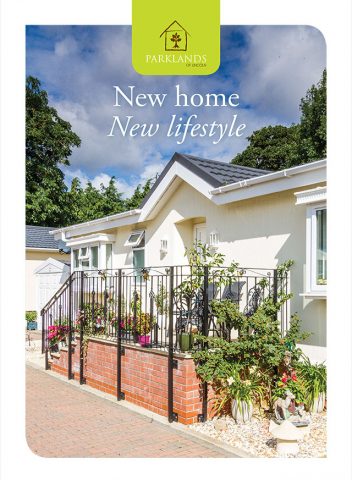Park homes have become an increasingly popular among retirees over the last 2 decades. Often placed on purpose-built retirement development plots, they offer a low maintenance living, and with the many other benefits, make them perfect for retirement. But what are they, how do they differ from other options, and what are the common misconceptions? In this article, we dive into it all.
What is a park home?
A park home is a type of prefabricated home, offering an affordable, low-maintenance place to live. These homes are distinctive as they’re elevated from the ground and function as small, detached bungalows by design.
Not everyone can buy a park home. Park homes are built on retirement developments, typically designed for people for 50 years and older. Rules and criteria vary depending on the development and it’s important to get clarification wherever you enquire.
How Park Homes Differ from Static Caravans
Residential park homes are often confused with static caravans. Yes, both are prefabricated, but in many ways, they are quite different. One of the biggest differences is that residential park homes are designed to be lived in all year-round, rather than just for holiday use.
The other thing that sets them massively apart is price, both for the initial purchase and ongoing running costs. Residential park homes are more expensive but usually offer a higher specification with features like insulation designed for full-time living. Park home site fees are known for being expensive, with annual costs alone ranging from £3,000 to £5,000+ per year. Using Parklands as an example, our site fees are around £1,800 per year (as of 06/2025), but on top of that, you’ll need to pay council tax.
Common Park Home Misconceptions
Park homes are not second homes
Park homes are a residential property and should be purchased as a primary residence for retirement. Under the Mobile Homes Act 1983, they cannot be used as a second home.
They’re rarely moved
Despite their legal and technical classification of a ‘mobile home’, park homes are rarely relocated once in situ. So, if you’re hoping to live out your retirement on the move and enjoy a change of scene, a caravan might be a more suitable option.
You’ll own the home, but not the land
You will own the building, but not the land. So, this is something to bear in mind. You will likely have a pitch fee to pay to cover the cost of the plot and maintenance of the grounds.
You can design your own home
There are not many affordable ways to design your own property, but a park home offers exactly that. With some sites, there is a favourable arrangement for you to choose your manufacturer and get a bespoke design, covering everything from carpet and wallpaper to fixtures and fittings, and even the layout. That means you can buy a home designed exactly how you want it, from the moment you move in.
They can’t be bought with a mortgage
Park homes cannot be bought with a mortgage. However, there are third party finance providers who can help buyers spread the upfront cost of buying a park home. Commonly, buyers who are retired have paid the mortgage on their existing house and use some of this capital to downsize and release the remaining equity to free up their finances for their retirement.
You can part-exchange
There is the possibility to part-exchange your current home for a new park home. Schemes like this have helped many retirees move into a park home much faster while avoiding the hassle of dealing with estate agents and buyers.
Learn More About Park Homes
Want to learn more about park homes? Get in touch with us today or come and explore our retirement development located just outside Lincoln in Lincolnshire – we’re open for visits every Wednesday. Speak to our residents, take a tour of the site and our latest show home, and see what we have to offer. Well located with everything you’ll ever need nearby, it truly is the perfect place for retirement.




